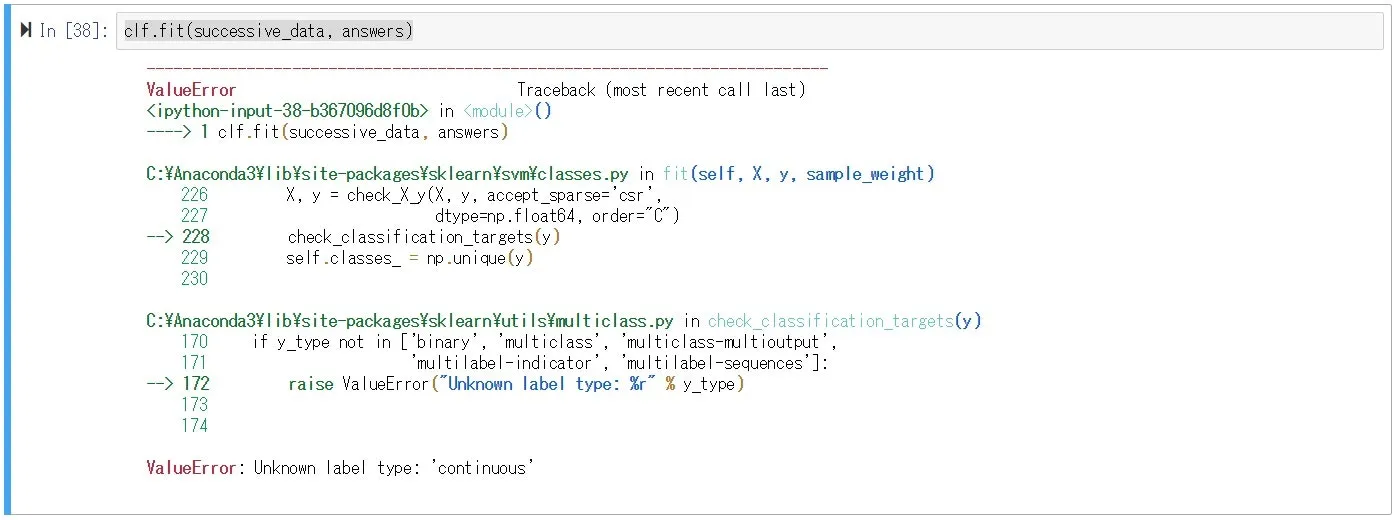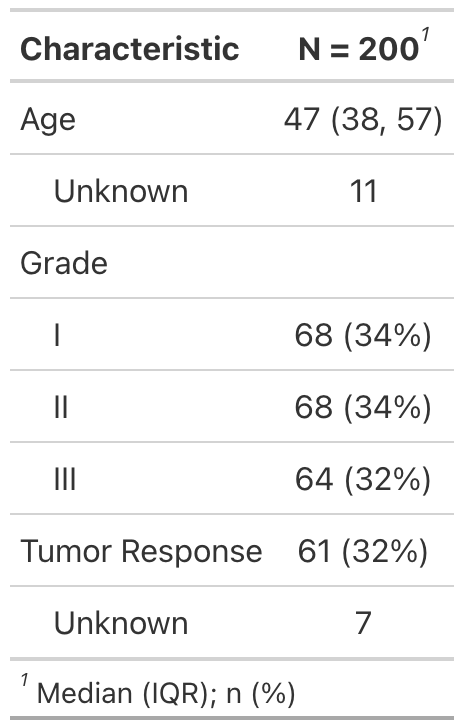Unknown Label Type ‘Continuous’
In the world of data classification and machine learning, labels play a crucial role in determining the output or prediction of a model. While many people are familiar with binary or categorical labels, there is another type of label that is not as well-known – the continuous label type. In this article, we will explore what continuous labels are, their characteristics, and the challenges and techniques associated with working with them.
1. What are Continuous Labels?
Continuous labels, also known as regression labels, are labels that have a continuous or numerical value. Unlike categorical labels which represent distinct classes or categories, continuous labels represent a range of values. For example, predicting the selling price of a house or the age of a person are examples of tasks that involve continuous labels.
2. Examples of Continuous Labels
Continuous labels can be found in various domains. Some common examples include:
– Stock market prediction: Predicting the price of a stock based on various factors such as historical data, market trends, and company financials.
– Sales forecasting: Predicting the future sales of a product based on historical sales data, pricing information, and promotional activities.
– Medical diagnosis: Predicting the severity of a disease or illness based on patient symptoms, test results, and medical history.
– Weather forecasting: Predicting temperature, humidity, wind speed, and other weather-related variables based on historical data and atmospheric conditions.
3. Challenges in Working with Continuous Labels
Working with continuous labels poses several challenges compared to categorical labels. First, continuous labels require a different set of evaluation metrics. Classification metrics such as accuracy, precision, and recall are not suitable for continuous labels as they are designed for binary or categorical outputs. Instead, metrics like Mean Squared Error (MSE), Root Mean Squared Error (RMSE), and Mean Absolute Error (MAE) are commonly used to evaluate the performance of models with continuous labels.
Another challenge is the presence of outliers in the continuous label values. Outliers are extreme values that deviate significantly from the rest of the data. They can have a major impact on the model’s performance and accuracy. Therefore, it is important to handle outliers properly to ensure accurate predictions.
4. Techniques for Handling Continuous Labels
Several techniques can be employed to handle continuous labels effectively. One common approach is feature engineering. This involves extracting relevant features from the input data that can help improve the accuracy of the model. For example, in the case of predicting house prices, factors such as location, square footage, and number of bedrooms can be considered as features.
Another technique is normalizing the continuous labels. Normalization transforms the label values into a standard range, usually between 0 and 1. This helps in reducing the influence of outliers and makes the labels more comparable across different data points.
5. Feature Engineering for Continuous Labels
Feature engineering plays a crucial role in improving the performance of models with continuous labels. It involves selecting and creating relevant features from the input data that can help the model make accurate predictions. Some common techniques used in feature engineering for continuous labels include:
– Polynomial features: This involves creating new features by combining existing features using polynomial functions. This can help capture complex relationships between the input variables and the continuous label.
– Interaction features: Interaction features are created by performing mathematical operations or combining multiple features together. These features can help the model capture interactions and dependencies between different variables.
– Time-based features: For tasks involving time-series data, creating features such as day of the week, month, or season can provide valuable information to the model.
6. Normalizing Continuous Labels
As mentioned earlier, normalizing continuous labels is an important step in working with them. Normalization transforms the label values into a more standard range, making them more comparable across different data points.
One common technique for normalization is min-max scaling, which scales the label values between 0 and 1. This can be achieved by using the following formula:
x_normalized = (x – min(x)) / (max(x) – min(x))
Another technique is z-score normalization, which transforms the label values into a standard normal distribution with a mean of 0 and a standard deviation of 1. This can be done using the formula:
x_normalized = (x – mean(x)) / std(x)
7. Evaluating Models with Continuous Labels
When evaluating models with continuous labels, the choice of evaluation metrics is different compared to models with categorical labels. The commonly used metrics include:
– Mean Squared Error (MSE): This metric calculates the average squared difference between the predicted and actual label values. A lower MSE indicates a better model performance.
– Root Mean Squared Error (RMSE): This is the square root of the MSE and provides a measure of the average prediction error. Like MSE, a lower RMSE indicates a better model.
– Mean Absolute Error (MAE): This metric calculates the average absolute difference between the predicted and actual label values. It provides a measure of the model’s average prediction accuracy.
8. Dealing with Outliers in Continuous Labels
Outliers can significantly impact the accuracy and performance of models with continuous labels. Handling outliers requires identifying them and deciding on an appropriate strategy. Some common techniques for dealing with outliers include:
– Trimming: Removing extreme values from the dataset based on a predefined threshold. This approach can help in reducing the influence of outliers on the model’s predictions.
– Winsorizing: Replacing extreme values with adjacent less extreme values. For example, replacing values above a certain threshold with the threshold value itself.
– Robust models: Using models that are less sensitive to outliers, such as DecisionTreeRegressor or Support Vector Machines (SVM) in scikit-learn. These models do not assume a specific distribution of the data and are more robust to extreme values.
9. Overcoming Bias in Continuous Labels
Bias can be a common challenge when working with continuous labels. Bias refers to systematic errors or inaccuracies in the predictions of the model. To overcome bias, it is important to pay attention to feature selection, feature engineering, and model selection. Ensuring that the input data is diverse, representative, and free from any inherent biases can help reduce bias in the predictions.
10. Future Directions in Continuous Labeling
Continuous labeling is an area that continues to evolve with advancements in machine learning and data science. Future directions in continuous labeling may involve exploring advanced regression techniques, such as unknown label type continuous logistic regression or unknown label type continuous decision trees. These techniques aim to improve the accuracy and performance of models with continuous labels.
In conclusion, working with continuous labels presents unique challenges and requires specialized techniques and evaluation metrics. By understanding the characteristics of continuous labels and employing suitable strategies, we can develop accurate models for tasks involving continuous predictions.
Unknown Label Type: Continuous
Keywords searched by users: unknown label type ‘continuous’ Unknown label type continuous logistic regression, Unknown label type continuous decision tree, Classification metrics can t handle a mix of binary and continuous targets, ValueError: Unknown label type unknown, DecisionTreeRegressor, SVM sklearn, LabelEncoder trong Python, Pandas label encoding
Categories: Top 87 Unknown Label Type ‘Continuous’
See more here: nhanvietluanvan.com
Unknown Label Type Continuous Logistic Regression
Introduction to Unknown Label Type Continuous Logistic Regression
Logistic regression is a widely used statistical method for modeling binary outcomes. Traditional binary logistic regression models are specifically designed to handle binary dependent variables, where the outcome is classified into two distinct categories, such as yes or no, success or failure, or true or false. However, in real-world scenarios, many problems require the prediction of continuous outcomes rather than binary ones. This is where unknown label type continuous logistic regression comes into play.
Unknown label type continuous logistic regression, also known as ordinal logistic regression, is an extension of binary logistic regression that deals with dependent variables having more than two ordered categories. It is used when the outcome variable has an inherent order or hierarchy, such as different levels of satisfaction (e.g., very satisfied, satisfied, neutral, dissatisfied, very dissatisfied) or likert scale ratings. The goal is to predict the probability of an observation belonging to a specific category or above that category on the ordinal scale.
Applications of Unknown Label Type Continuous Logistic Regression
Unknown label type continuous logistic regression finds its applicability in a wide range of fields. Some of the key applications include:
1. Customer Satisfaction Analysis: Companies often use ordinal scales to measure customer satisfaction levels. Unknown label type continuous logistic regression can help analyze survey data and predict the probability of customers falling into different satisfaction categories, allowing businesses to take targeted actions to improve customer experience.
2. Educational Research: In educational research, ordinal scales are frequently used to assess students’ performance or attitude toward learning. By applying unknown label type continuous logistic regression, researchers can predict the probability of students achieving higher scores and identify factors that influence academic success.
3. Health-related Studies: Medical researchers often deal with outcomes that have multiple ordered categories, such as stages of disease progression or severity levels. Unknown label type continuous logistic regression enables them to model and predict patients’ disease stages based on various clinical and demographic variables.
Advantages of Unknown Label Type Continuous Logistic Regression
1. Utilizes Complex Information in Dependent Variable: Traditional binary logistic regression methods ignore the order or hierarchy within categorical outcomes. Unknown label type continuous logistic regression allows for the incorporation of the inherent structure and ordinal nature of the dependent variable when making predictions.
2. Flexibility in Modeling: With unknown label type continuous logistic regression, researchers have the flexibility to consider different assumptions regarding the relationship between predictor variables and the ordinal outcome. This flexibility allows for a more accurate representation of real-world scenarios.
3. Preserves Statistical Power: Unlike other models that treat ordinal data as unordered categories, unknown label type continuous logistic regression utilizes the ordinal information, which preserves statistical power and may lead to more robust and reliable results.
Challenges of Unknown Label Type Continuous Logistic Regression
While unknown label type continuous logistic regression offers several advantages, it also comes with its challenges. Some of the common challenges include:
1. Sample Size Requirements: To estimate the parameters accurately, a sufficient number of observations or cases are required for each category of the dependent variable. Inadequate sample sizes can lead to unstable parameter estimates and unreliable results.
2. Proportional Odds Assumption: Unknown label type continuous logistic regression assumes that the relationship between predictor variables and the ordinal outcome is the same across all levels of the outcome. Violations of this assumption may affect the model’s accuracy and interpretation.
3. Interpretation Complexity: Interpreting results from unknown label type continuous logistic regression models can be more complex compared to binary logistic regression models. Researchers need to carefully understand and communicate the odds ratios or probability estimates for each level of the outcome variable.
FAQs
Q1: Is unknown label type continuous logistic regression appropriate for data with a large number of ordered categories?
A1: Unknown label type continuous logistic regression can handle a large number of ordered categories. However, a sufficient sample size for each category is crucial for accurate estimation.
Q2: Can I use unknown label type continuous logistic regression with nominal categorical variables?
A2: No, unknown label type continuous logistic regression is specifically designed for ordinal categorical variables. If you have nominal variables, you may need to consider alternative methods like multinomial logistic regression.
Q3: Are there any software packages available for performing unknown label type continuous logistic regression?
A3: Yes, several popular statistical software packages such as R, Python (with libraries like StatsModels or scikit-learn), and SPSS provide functions or modules for conducting unknown label type continuous logistic regression analysis.
Q4: How do I assess the goodness-of-fit of an unknown label type continuous logistic regression model?
A4: Various goodness-of-fit tests and model fit indices are available to evaluate the fit of the model, including the proportional odds assumption test and measures like the Akaike Information Criterion (AIC) or Bayesian Information Criterion (BIC).
Conclusion
Unknown label type continuous logistic regression is a valuable tool for predicting the probability of an ordinal outcome. It leverages the order or hierarchy within the dependent variable to provide insights and make accurate predictions. By modeling the complex relationship between predictor variables and the ordinal outcome, this method finds its applications in diverse fields such as customer satisfaction analysis, educational research, and health-related studies. However, researchers should be aware of the challenges associated with sample size requirements, assumptions, and interpretation complexity. With careful implementation and analysis, unknown label type continuous logistic regression can offer valuable insights for informed decision-making.
Unknown Label Type Continuous Decision Tree
Introduction
Decision trees are a widely used machine learning algorithm that has proven to be effective in both classification and regression tasks. Traditional decision trees work well when the target variable is categorical, but they become less effective when encountering continuous target variables. In such cases, an unknown label type continuous decision tree algorithm comes to the rescue. This article aims to provide a comprehensive guide to understanding the concept, working principles, advantages, and FAQs regarding unknown label type continuous decision trees.
What is an Unknown Label Type Continuous Decision Tree?
An unknown label type continuous decision tree is an extension of the traditional decision tree algorithm designed specifically for cases when the target variable is continuous. Traditional decision trees use categorical splits to classify instances, but when the target variable is continuous, they fail to provide accurate predictions. The continuous decision tree algorithm overcomes this limitation by using continuous splits, allowing for more accurate predictions in regression problems.
How Does an Unknown Label Type Continuous Decision Tree Work?
1. Data Preprocessing:
– Just like with other machine learning algorithms, data preprocessing is crucial. Ensure that the dataset is cleaned, missing values are handled appropriately, and feature scaling is applied if necessary.
2. Building Tree Nodes:
– The continuous decision tree algorithm starts by building the root node, which contains all the instances in the dataset.
– Select a continuous feature to split the data into two child nodes. The split point is chosen based on certain criteria such as minimizing squared error or maximizing information gain.
– Recursively repeat the splitting process on each child node until a termination condition is met, such as a minimum number of instances per leaf or a maximum depth.
3. Making Predictions:
– To make a prediction for an unknown instance, traverse the decision tree based on the feature values of that instance.
– When reaching a leaf node, the target variable value associated with that leaf becomes the predicted value for the unknown instance.
Advantages of Unknown Label Type Continuous Decision Trees
1. Improved Predictions:
– The continuous splits used in the algorithm enable more accurate predictions for continuous target variables compared to traditional decision trees.
– By utilizing continuous values instead of categorical ones, the algorithm can capture more nuanced relationships between features and the target variable.
2. Interpretability:
– Like traditional decision trees, the continuous decision tree algorithm provides interpretable models.
– Each split in the tree corresponds to a specific condition, making it easy to understand and explain the decision-making process to stakeholders.
3. Robustness to Outliers:
– Unknown label type continuous decision trees are less affected by outliers compared to some other regression algorithms.
– The algorithm can handle outliers by splitting them into separate leaf nodes, leading to localized prediction adjustments without negatively impacting the rest of the model.
Frequently Asked Questions (FAQs)
Q1. Are unknown label type continuous decision trees suitable only for regression problems?
A1. Yes, unknown label type continuous decision trees are designed specifically for regression tasks where the target variable is continuous.
Q2. Can the algorithm handle missing values in the dataset?
A2. Yes, the algorithm can handle missing values, but appropriate preprocessing techniques should be applied, such as imputation or deletion of instances with missing values.
Q3. Are unknown label type continuous decision trees prone to overfitting?
A3. Like traditional decision trees, continuous decision trees can also be prone to overfitting. To mitigate overfitting, pruning techniques or regularization parameters should be applied during the training process.
Q4. How does the continuous decision tree algorithm handle categorical features?
A4. To handle categorical features, they need to be transformed into numerical values or handled using techniques like one-hot encoding before training the continuous decision tree model.
Q5. Can unknown label type continuous decision trees handle large datasets?
A5. Yes, unknown label type continuous decision trees can handle large datasets. However, the computational complexity of training the tree increases with the size of the dataset.
Conclusion
Unknown label type continuous decision trees provide a valuable solution for regression tasks involving continuous target variables. Their ability to handle continuous splits and capture nuanced relationships between features and the target variable makes them a powerful tool in machine learning. Moreover, their interpretability and robustness to outliers make them suitable for various applications. By understanding the working principles and advantages of unknown label type continuous decision trees, data scientists can enhance their prediction capabilities in regression problems.
Images related to the topic unknown label type ‘continuous’

Found 50 images related to unknown label type ‘continuous’ theme













.png?generation=1663857391002221&alt=media)









![sklearn] ValueError: Unknown label type: 'continuous' の解決法 - Qiita Sklearn] Valueerror: Unknown Label Type: 'Continuous' の解決法 - Qiita](https://qiita-user-contents.imgix.net/https%3A%2F%2Fcdn.qiita.com%2Fassets%2Fpublic%2Farticle-ogp-background-9f5428127621718a910c8b63951390ad.png?ixlib=rb-4.0.0&w=1200&mark64=aHR0cHM6Ly9xaWl0YS11c2VyLWNvbnRlbnRzLmltZ2l4Lm5ldC9-dGV4dD9peGxpYj1yYi00LjAuMCZ3PTkxNiZ0eHQ9JTVCc2tsZWFybiU1RCUyMFZhbHVlRXJyb3IlM0ElMjBVbmtub3duJTIwbGFiZWwlMjB0eXBlJTNBJTIwJTI3Y29udGludW91cyUyNyUyMCVFMyU4MSVBRSVFOCVBNyVBMyVFNiVCMSVCQSVFNiVCMyU5NSZ0eHQtY29sb3I9JTIzMjEyMTIxJnR4dC1mb250PUhpcmFnaW5vJTIwU2FucyUyMFc2JnR4dC1zaXplPTU2JnR4dC1jbGlwPWVsbGlwc2lzJnR4dC1hbGlnbj1sZWZ0JTJDdG9wJnM9ZmI5Yzc2NzQ5Y2JjZDQ0NTRhODY5NGVmMTIwNTllOTA&mark-x=142&mark-y=112&blend64=aHR0cHM6Ly9xaWl0YS11c2VyLWNvbnRlbnRzLmltZ2l4Lm5ldC9-dGV4dD9peGxpYj1yYi00LjAuMCZ3PTYxNiZ0eHQ9JTQwb3NvcmV6dWdvaW5nJnR4dC1jb2xvcj0lMjMyMTIxMjEmdHh0LWZvbnQ9SGlyYWdpbm8lMjBTYW5zJTIwVzYmdHh0LXNpemU9MzYmdHh0LWFsaWduPWxlZnQlMkN0b3Amcz02MzQxYTRiNjliZTNiNDcxMDQ4NWYxNWU2NjcxMGY0ZA&blend-x=142&blend-y=491&blend-mode=normal&s=ccb84114468588ea9fb784661fc432fe)










Article link: unknown label type ‘continuous’.
Learn more about the topic unknown label type ‘continuous’.
- How to Fix: ValueError: Unknown label type: ‘continuous’
- Unknown label type: ‘continuous’ using sklearn in python …
- Fix ValueError: Unknown label type: ‘continuous’ In scikit-learn
- ValueError: Unknown label type: ‘continuous’ – Kaggle
- Python ValueError: Unknown Label Type: ‘continuous’
- Valueerror: Unknown Label Type – Nhanvietluanvan.com
- Logistic Regression not working because of unknown label …
- Valueerror: unknown label type: ‘continuous’ – Itsourcecode.com
- Unknown label type: ‘continuous’ using sklearn in python
See more: nhanvietluanvan.com/luat-hoc